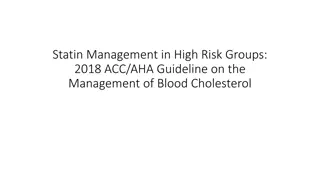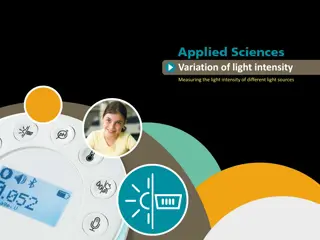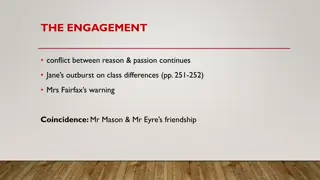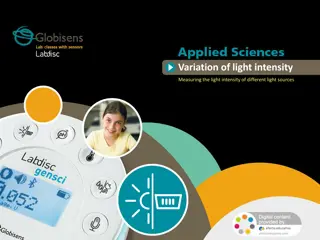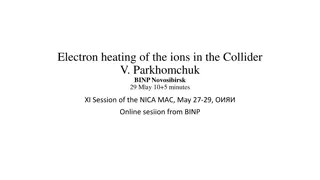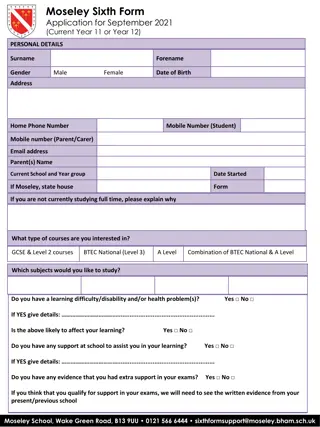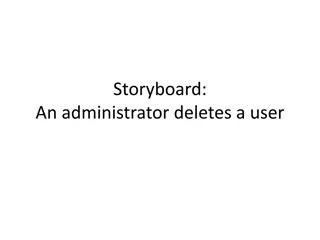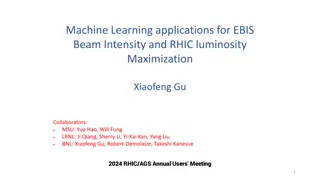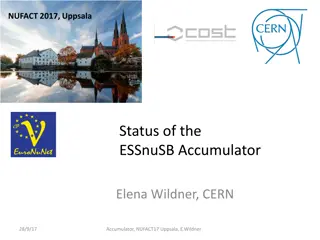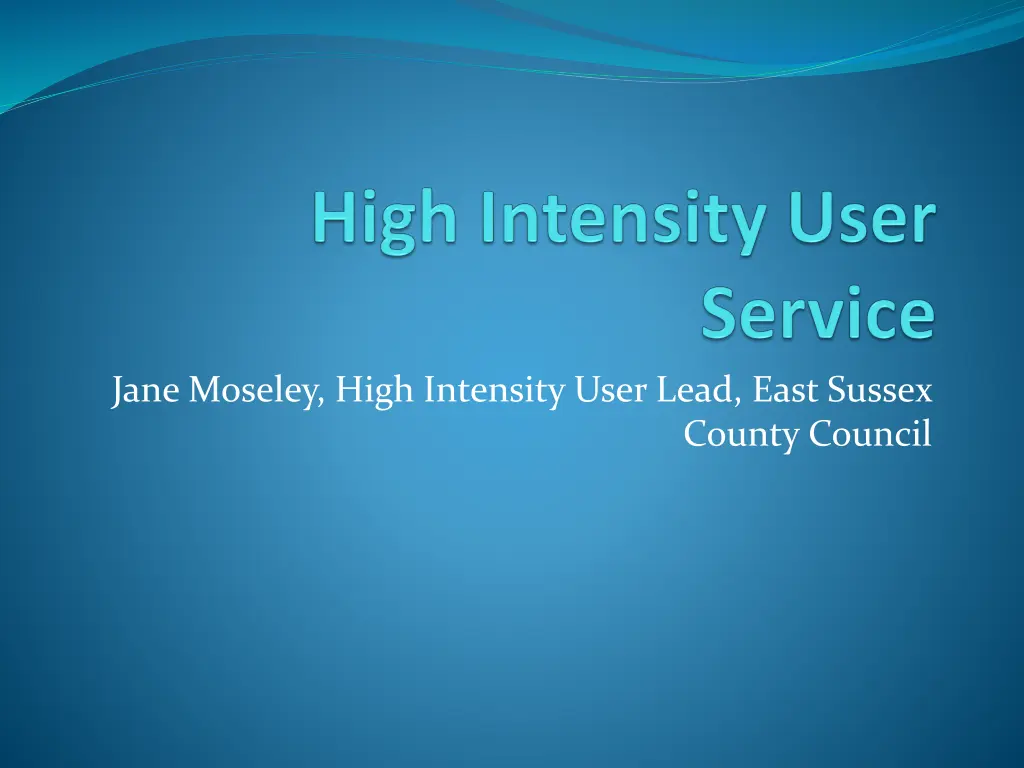
Understanding High Intensity Users in Healthcare
Learn about the role of a High Intensity User Lead at East Sussex County Council, the characteristics of High Intensity Users, and strategies to reduce frequent user activity in healthcare settings. Discover how empathy, compassion, and strong negotiation skills are essential in helping vulnerable individuals reintegrate into the community effectively.
Uploaded on | 2 Views
Download Presentation

Please find below an Image/Link to download the presentation.
The content on the website is provided AS IS for your information and personal use only. It may not be sold, licensed, or shared on other websites without obtaining consent from the author. If you encounter any issues during the download, it is possible that the publisher has removed the file from their server.
You are allowed to download the files provided on this website for personal or commercial use, subject to the condition that they are used lawfully. All files are the property of their respective owners.
The content on the website is provided AS IS for your information and personal use only. It may not be sold, licensed, or shared on other websites without obtaining consent from the author.
E N D
Presentation Transcript
Jane Moseley, High Intensity User Lead, East Sussex County Council
How I came to this role About the Role: Skills required will be empathy, compassion, strong negotiation, patience and a real appetite for helping those that many others may have either forgotten about or have turned away. This is an excellent opportunity to make a difference to people s lives by putting in place interventions that reintegrate people into the local community without the need to make demands on services that may not be the most appropriate to meet their needs . The successful candidates will be working closely with the local Clinical Commissioning Group, A&E department, ambulance service, police, local authorities, local community health teams, and the voluntary sector
The figures From June 2017 to May 2018, the 31,492 patients that made up the High Intensity User (HIU) group represented just 0.4 per cent of all patients seen in A&E but almost 4 per cent of all attendances. At the most extreme, some users attended A&E in excess of once a day on average. The top ten HIUs visited A&E over 235 times each in a year. The median number of attendances per HIU was 16 in a year, which averages out as 1.33 attendances at A&E per month. Dr Foster (2018)
Characteristics of High Intensity Users 70% live in more deprived areas proportion of HIUs admitted with abdominal pain, nonspecific chest pain, alcohol-related mental disorder, poisoning from drugs or psychotropic agents was higher than for non-HIUs. While it appears that poor physical and mental health plays an important role in whether someone is a high intensity user, it is not the sole determining factor, and other aspects of a lifestyle linked to deprivation could contribute to high intensity use. The assumption might be that HIUs will fall into older groups, but the analysis appears to contradict this. The highest percentages of all patients attending A&E were between 21 and 30 years old, with the percentage of HIUs in this age band slightly higher than non-HIUs, and the percentage of HIUs steadily decreasing with each advancing age band. HIUs were around 5.6 per cent more likely to have left A&E before being treated. Data suggests that HIUs attended more frequently in the night, between 8pm and 6am, than their non-HIU counterparts . This could be because other health and social care services are inaccessible during the evening or it could also relate to the factors influencing HIUs, that they are impacted more by social factors such as homelessness, loneliness, depression or anxiety. Dr Foster (2018)
HIU Service offers a robust way of reducing frequent user activity primarily to A&E and non-elective admissions but can also contribute to reducing other avoidable unscheduled care contacts. Now live in over 80 CCGs across the country, the programme is freeing up front line resources to focus on other patients and reduce costs. It uses a health coaching approach, targeting high users of services and supports the most vulnerable individuals within the community to flourish, whilst making the best use of available resources. NHS Rightcare (2019)
The objectives of the service Measurable: Identify those at greatest risk of A&E attendance and non-elective admissions. Proactively manage a rolling cohort of High Intensity Users using a truly personalised approach. Coordinate, sign post and oversee other identified High Intensity Users. Reduce 999 calls as a natural by-product. Reduce A&E attendances and avoidable NEL admissions. More difficult to measure but essential: Form robust network of community health, social care, mental health and police to manage patients, creating true integrated working. Provide a service driven by quality with positive human outcomes observed. Act as a conduit to negotiate and de-escalate issues before a crisis occurs; a situation which has historically led to a destabilisation of their condition and resulting in a 999 call / A&E attendance. Improve communication and partnership working between those involved in patient care 24/7. Assist other providers to identify patterns and causal factors which trigger relapse behaviours in former High Intensity Users in order to shape future commissioning of service and/or demand/capacity planning. Empower patients to self-manage to enable discharge and to switch them from negative to positive contributors of society. Drive equality and patient voice. NHS Rightcare (2019)
The principles of the service Identify. The top 50 High Intensity Users are identified utilising A&E data systems. Some additional clients are selected due to their vulnerability as opposed to chronically high use of health services. Personalise. The individuals are contacted directly by a phone call from the HIU lead. The calls focus on the individuals issues, identifying, de-medicalising, de-criminalising and humanising their needs to uncover the real reason for calling 999, A&E or an admission. De-escalate. Many individuals use health care frequently due to an escalation in their social, emotional, financial or family issues; an unmet need. Competent de-escalation is facilitated by offering immediate access to an appropriate coaching support service (the HIU lead). Discharge. Discharge from the project to community support services takes place when the individual requires on-going support but not at the intensity or specialism of the HIU lead. Many individuals, following initial support from the High Intensity User service are discharged without the need for follow up but this needs to be done skilfullyand mindfully. Many are reconnected to their community with friends and purpose. The word discharge is not used as people hear rejection so connecting individuals to the community without immediate relapse requires consideration. Manage relapse. Once supported by the service, individuals often begin to feel more positive, decrease their dependency and improve their personal outcomes. Relapse can occur when individuals begin to feel isolated again or feel they can no longer cope with a change in situation. They may begin attending A&E again but more usually, these people instead contact the HIU lead directly who immediately picks up their issue and helps them navigate through the difficult time rather than returning to their old behaviourof attending A&E. Quality of intervention. Higher quality more personalised and effective interventions will create robust connections and positive outcomes for individuals and deliver financial savings to the system with increased pace. 1. 2. 3. 4. 5. 6.
What makes the HIU service different Rhian Monteith: Our work with HIUs has shown, time and again, that when you put these people in a box and label them - regardless of the label - you miss the point about how best to help them. Our experience shows that the underlying personal reasons for HIU behaviours do not lend themselves to models, averages, or trend-lines. They cannot be generalised. They cannot be viewed usefully from the safety of an office, nor do they allow the luxury of a top down view. And this is why solutions designed at a safe distance for an abstract typical HIU tend to fail. We have succeeded by starting and finishing our interventions with the individual. We test what might work in the field; we re fearless about the risk of mistakes; and we re rigorous in learning from those mistakes before we move ahead. Of course we want to lead these people away from their behaviour, for their own benefit and for the benefit of a stretched public service. But in order to Lead, we must first Serve. We serve by listening before we decide. By understanding before we act. By personalising before we deploy.
How do I work List of highest A&E attenders every 3 months Call people from the list say we are concerned and listen to their story Arrange to meet Listen to what is going on for them, ask for consent to share and gather information Provide contact number and keep in contact (issues with phones!) Link with other services and professionals involved Build trust relationship, call when needed, get them to call me Respond as necessary Building confidence/strategies/accessing appropriate services No formal discharge
Cycle of change Prochaska & DiClemente
Case examples 65 year old male frequent falls 50 year old male alcohol dependency 25 year old female Overdose/ drug use 85 year old female swallowed foreign object 34 year old female issues with pain
OT and HIU Service Truly client centred Use of Physical and Mental Health training, crossing service boundaries Identifying Occupational Issues and helping the person to address these e.g basic ADL skills, social skills, self-management, etc.. Activity analysis. Occupational deprivation/ imbalance/ Flexibility to do what is needed, taking the lead from the person that you are working with. Creativity using OT toolkit flexibility with ever changing needs
References Dr Foster (2018), High intensity users: reducing the burden on accident & emergency departments ANALYSIS OF ACCIDENT & EMERGENCY ATTENDANCES IN ENGLAND 2017/18 NHS Rightcare (2019) Setting up a High Intensity User service: An NHS RightCare resource pack



